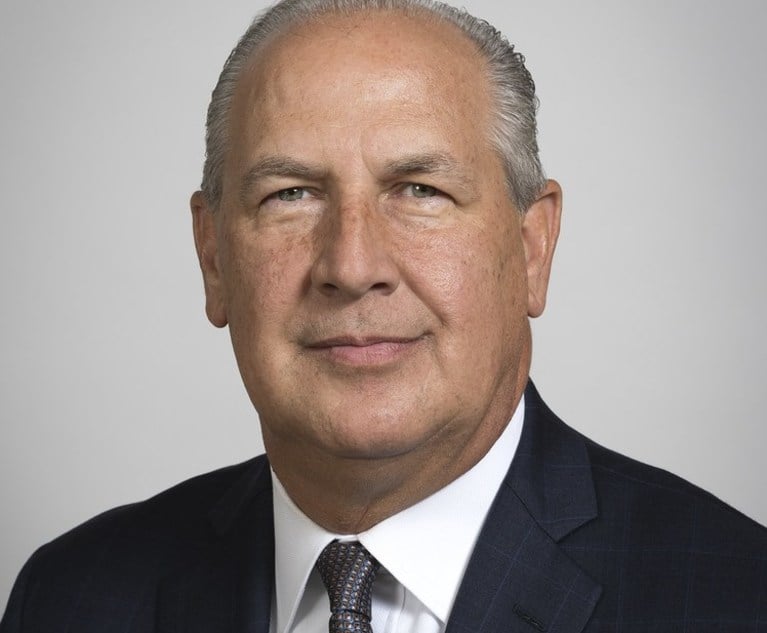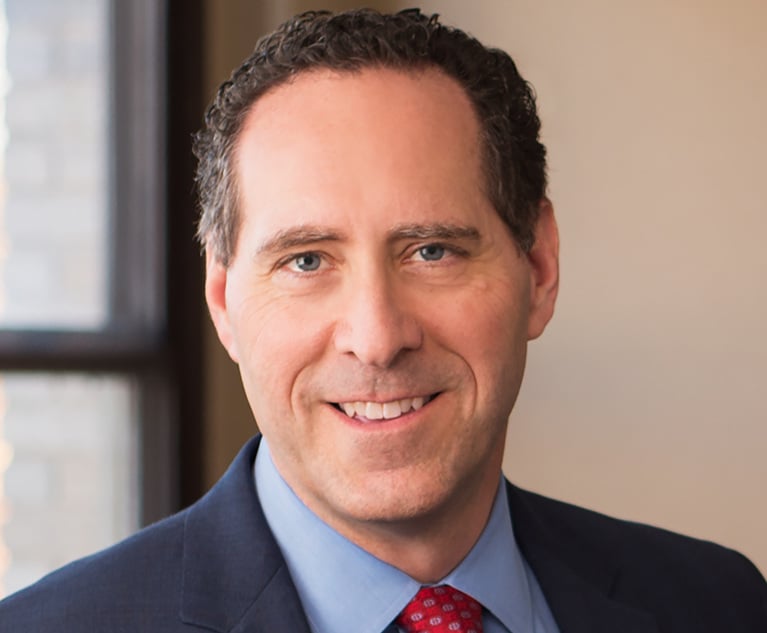The End Is Nigh—Or Is It? Experts Debate Law Firm Rate Hikes, AI's Impact and Adaptability
Law firm rates have been on the rise for years—and continue to climb. Yet rumblings indicate clients may have just about had enough. Is the era of continuously rising rates about to hit a snag? Or is it all smooth sailing?
September 20, 2024 at 10:20 AM
13 minute read
 Toby Brown, left, founder of DV8 Strategies, and Marcie Borgal Shunk, right, founder of The Tilt Institute. Courtesy photos
Toby Brown, left, founder of DV8 Strategies, and Marcie Borgal Shunk, right, founder of The Tilt Institute. Courtesy photos
Smart Strategy
Law firm rates have been on the rise for years—and continue to climb. Yet rumblings indicate clients may have just about had enough. Is the era of continuously rising rates about to hit a snag? Or is it all smooth sailing? Renowned pricing expert and former chief practice officer Toby Brown, founder of DV8 Strategies and Marcie Borgal Shunk, industry analyst and founder of The Tilt Institute share their (sometimes divergent) viewpoints on the future of rates, profitability and more.
The Backdrop
A remarkable 86% of law firms expect to increase rates in the next 12 months, according to Wells Fargo, and over a decade of data from Thomson Reuters indicates worked rates have increased somewhere from about 3% to 7% year-over-year since 2007 (only once, in 2022, not exceeding the rate of inflation). Over the same timeframe, billable hours dipped, with monthly hours clocked per lawyer sinking from close to 140 (1,680 annually) to just about 115 hours per month (1,380), according to Thomson Reuters. This combination highlights a stark fact—lawyers are working less and charging more.
Clients, for the most part, have accepted (or at least been tolerant of) rate increases. Barring notable economic disruptors such as the financial crisis of 2008/2009, rate hikes have been the norm, especially outside the largest legal departments. Sophisticated law firm pricing analysts optimize profitability by giving the illusion of discounts—higher standard rates in exchange for "deals" to clients in the form of deeper and deeper discounts (as reflected in dipping realization which landed at a sad 79.5% in recent months according to ALM data). In turn, law firms sustain strong profit margins—36% on average for Am Law 200 firms in 2023—and have enjoyed inflation-adjusted growth in PEP and PPL of 32.6% and 16.6% respectively over the past decade.
NOT FOR REPRINT
© 2025 ALM Global, LLC, All Rights Reserved. Request academic re-use from www.copyright.com. All other uses, submit a request to [email protected]. For more information visit Asset & Logo Licensing.
You Might Like
View All
AI and Social Media Fakes: Are You Protecting Your Brand?

Trump RTO Mandates Won’t Disrupt Big Law Policies—But Client Expectations Might
6 minute read
Montgomery McCracken Touts 'Record' Financial Performance Despite Shrinking Head Count
6 minute read
Cohen Seglias Leader Discusses Growing From Construction Practice into Full-Service Law Firm
Trending Stories
- 1Buchalter Hires Longtime Sheppard Mullin Real Estate Partner as Practice Chair
- 2A.I. Depositions: Court Reporters Are Watching Texas Case
- 3Second DCA Greenlights USF Class Certification on COVID-19 College Tuition Refunds
- 435 Years After CT's Affordable Housing Act, Progress Remains a Struggle
- 5Bankruptcy Judge Clears Path for Recovery in High-Profile Crypto Failure
Who Got The Work
J. Brugh Lower of Gibbons has entered an appearance for industrial equipment supplier Devco Corporation in a pending trademark infringement lawsuit. The suit, accusing the defendant of selling knock-off Graco products, was filed Dec. 18 in New Jersey District Court by Rivkin Radler on behalf of Graco Inc. and Graco Minnesota. The case, assigned to U.S. District Judge Zahid N. Quraishi, is 3:24-cv-11294, Graco Inc. et al v. Devco Corporation.
Who Got The Work
Rebecca Maller-Stein and Kent A. Yalowitz of Arnold & Porter Kaye Scholer have entered their appearances for Hanaco Venture Capital and its executives, Lior Prosor and David Frankel, in a pending securities lawsuit. The action, filed on Dec. 24 in New York Southern District Court by Zell, Aron & Co. on behalf of Goldeneye Advisors, accuses the defendants of negligently and fraudulently managing the plaintiff's $1 million investment. The case, assigned to U.S. District Judge Vernon S. Broderick, is 1:24-cv-09918, Goldeneye Advisors, LLC v. Hanaco Venture Capital, Ltd. et al.
Who Got The Work
Attorneys from A&O Shearman has stepped in as defense counsel for Toronto-Dominion Bank and other defendants in a pending securities class action. The suit, filed Dec. 11 in New York Southern District Court by Bleichmar Fonti & Auld, accuses the defendants of concealing the bank's 'pervasive' deficiencies in regards to its compliance with the Bank Secrecy Act and the quality of its anti-money laundering controls. The case, assigned to U.S. District Judge Arun Subramanian, is 1:24-cv-09445, Gonzalez v. The Toronto-Dominion Bank et al.
Who Got The Work
Crown Castle International, a Pennsylvania company providing shared communications infrastructure, has turned to Luke D. Wolf of Gordon Rees Scully Mansukhani to fend off a pending breach-of-contract lawsuit. The court action, filed Nov. 25 in Michigan Eastern District Court by Hooper Hathaway PC on behalf of The Town Residences LLC, accuses Crown Castle of failing to transfer approximately $30,000 in utility payments from T-Mobile in breach of a roof-top lease and assignment agreement. The case, assigned to U.S. District Judge Susan K. Declercq, is 2:24-cv-13131, The Town Residences LLC v. T-Mobile US, Inc. et al.
Who Got The Work
Wilfred P. Coronato and Daniel M. Schwartz of McCarter & English have stepped in as defense counsel to Electrolux Home Products Inc. in a pending product liability lawsuit. The court action, filed Nov. 26 in New York Eastern District Court by Poulos Lopiccolo PC and Nagel Rice LLP on behalf of David Stern, alleges that the defendant's refrigerators’ drawers and shelving repeatedly break and fall apart within months after purchase. The case, assigned to U.S. District Judge Joan M. Azrack, is 2:24-cv-08204, Stern v. Electrolux Home Products, Inc.
Featured Firms
Law Offices of Gary Martin Hays & Associates, P.C.
(470) 294-1674
Law Offices of Mark E. Salomone
(857) 444-6468
Smith & Hassler
(713) 739-1250





